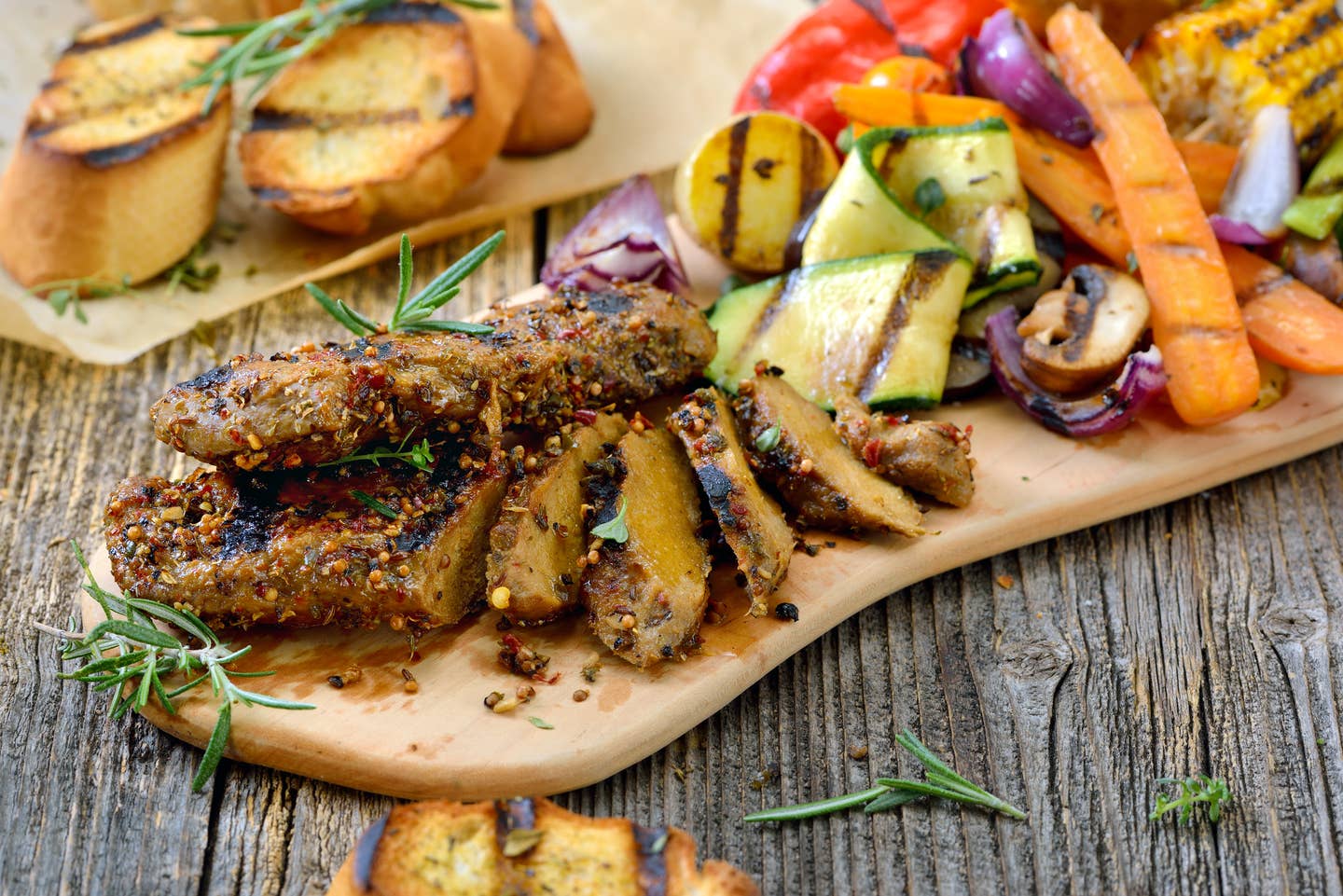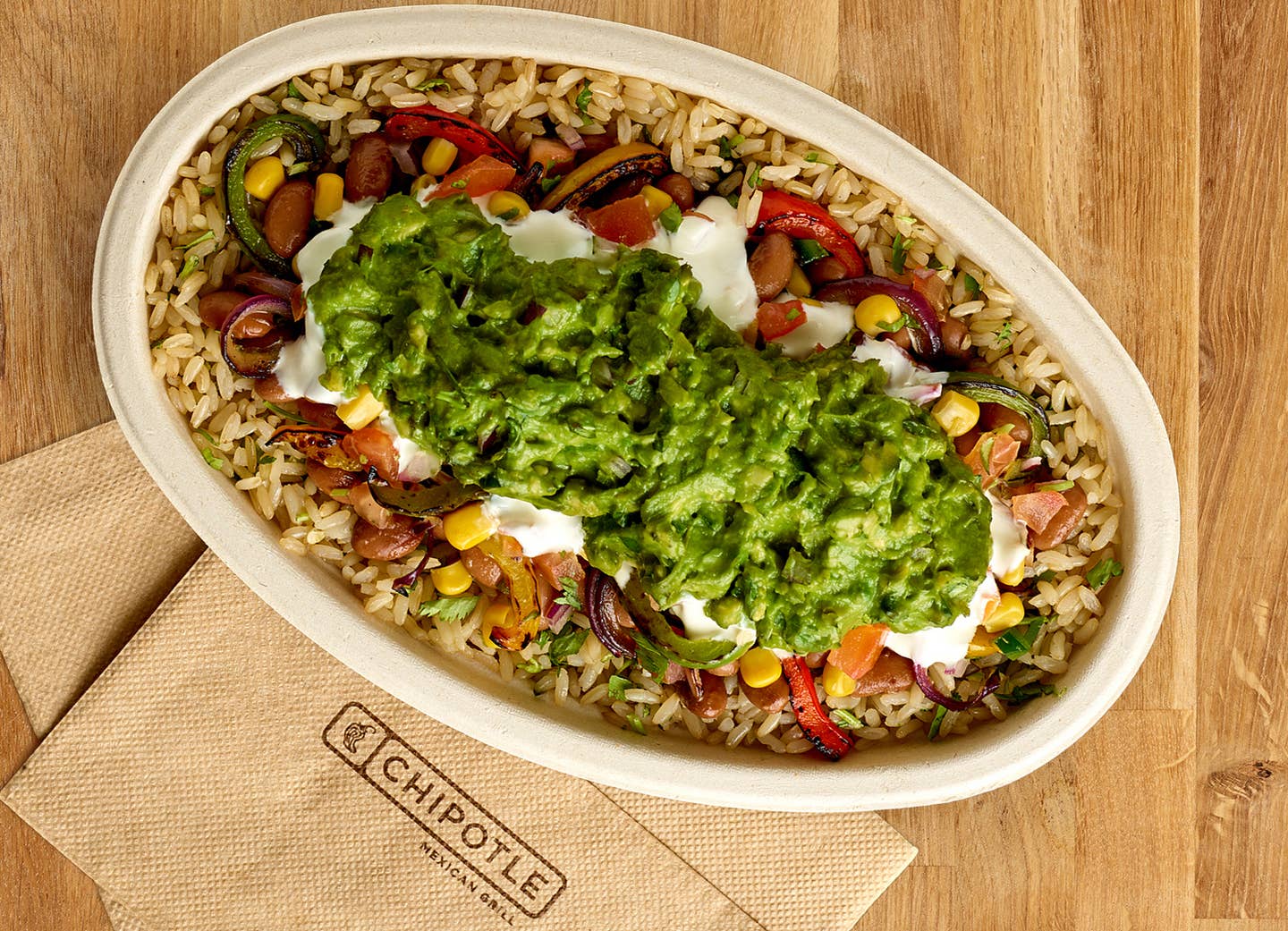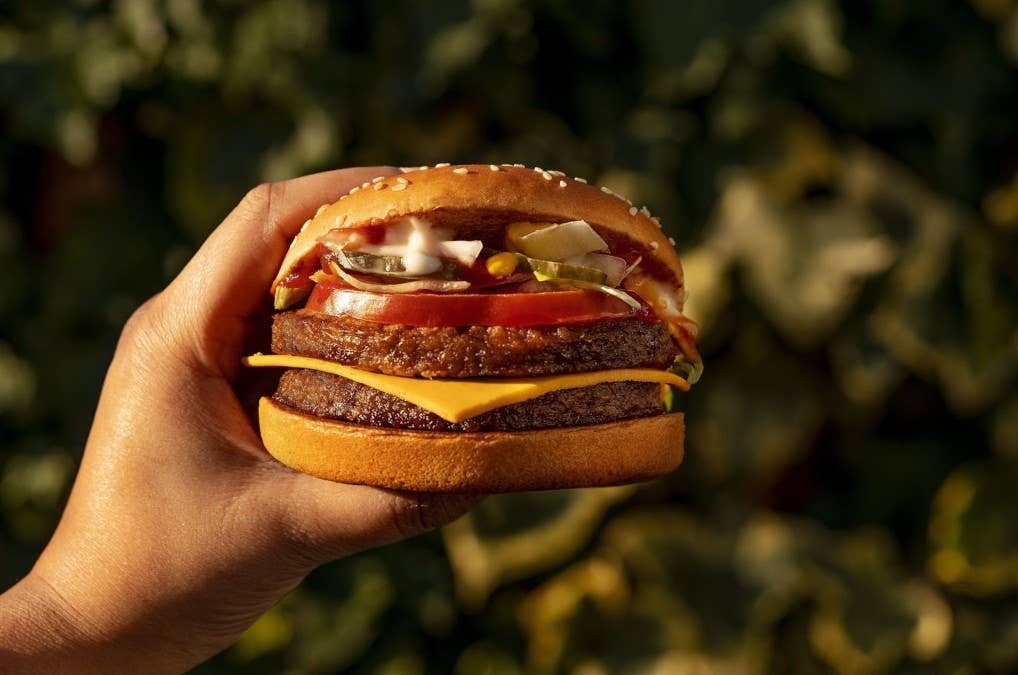
Beyond Meat CEO Reveals Vegan Steak Will Be Available This Year
Shoppers can visit any grocery store and find plant-based alternatives to nearly every conventional meat product available. And a significant amount of credit can be attributed to Beyond Meat. Now, the California-based company plans to tackle one of the final frontiers of the vegan meat industry: steak. During The Wall Street Journal’s Global Food Forum this week, Beyond’s CEO Ethan Brown revealed that a whole-cut vegan steak will be available by the end of the year.
Brown revealed that Beyond’s vegan steak production is well on its way to completion and eventual commercialization. The entrepreneur claimed that “It’s probably one of our best products to date,” during the conference. The vegan steak will join Beyond’s selection of plant-based chicken, pork, and beef products.
Beyond intends to revitalize the company’s current market standings with its innovative sliced steak product. The sliced steak will be the company’s first meat alternative to replicate whole pieces of meat whereas the other food offerings include tenders, burger patties, meatballs, and others. Brown told the WSJ that Beyond will initially release the sliced steak through retailers before entering foodservice locations.
“The reasons to do what we’re doing and the reason for the consumer to engage with what we’re doing strengthens every day,” Brown said. “There’s the pandemic. There’s [the] recession. There’s [the] gas prices. There’s all this noise out there, but what continues to strengthen is the need to do what we’re doing.
"We’re getting better at that every year and with reason to do it in terms of climate, human health, the overall environment (land, energy, and water), and animal welfare … all those reasons continue to be present and increase in importance.”
Beyond Meat’s Stock Market Prices Stall
Since Beyond’s stock market high, the plant-based food company’s value has fallen nearly 43 percent in the last five years. Currently valued at $24.25, the food-tech company is far off from its record high at $234.90 per share. The stall in Beyond’s growth, however, fails to deter either Brown or the entire company from pushing plant-based development further. Over recent months, the company has pushed rebranding, increased food service partnerships, and even enlisted Kim Kardashian as its new Chief Taste Officer.
“You’re going to have disturbances and you’re going to have distractions as you build a new category,” Brown said. “You go for a long run. You take a plateau. You go for another long run and then all of a sudden it’s mainstream. That’s what’s happening in [the plant-based] sector.”
Expanding Into New Plant-Based Frontiers
Beyond’s stock market slowdown is not stopping the company from innovating the plant-based sector. This April, the company announced that its signature Beyond Meat Tenders would become available at 8,000 more stores in the coming months. The retail expansion started this April, making the vegan tenders more widely available at CVS, Kroger, Sprouts, Whole Foods, and Albertsons locations nationwide.
This year, Beyond also partnered with PepsiCo to formulate the Planet Partnership, announcing the jointly branded Beyond Jerky – a beef jerky alternative made from mung beans and pea. These product developments also accompany the brand’s increasing presence in fast-food. Beyond has teamed up with Panda Express to release three vegan food items and McDonald’s to create the meatless McPlant burger.
“What I see is an increasing global opportunity into a $1.4 trillion market,” Brown said. “All of these things are about building the next global protein company. And my vision for this is a $40 billion company, not a $4 billion company. So I don’t think in quarterly terms. I don’t think in annual terms. I think in a longer-term perspective we will deliver on this. I am absolutely certain of that.”
It is no surprise that Beyond is working on several plant-based alternatives, because last August, the company filed for 108 trademarks including Beyond Seafood, Beyond Milk, Beyond Tuna, and more. The trademarks indicate that the company might have much more up its sleeve than Beyond Steak.
Vegan Steak is Already Here
While Brown showed enthusiasm about bringing vegan steak to consumers, another company beat Beyond Meat to the punch. The Israeli food-tech company Redefine Meat developed a 3-D printed steak made completely from plants. The proprietary technology used to create this steak alternative threads together plant-protein fibers to replicate the texture and look of whole-cut meats. The product even caught the attention of esteemed chef Marco Pierre White, who introduced the steaks to his UK restaurants.
For more plant-based happenings, visit The Beet's News articles.
Top 10 Sources of Plant-Based Protein According to a Nutritionist
1. Seitan
Protein: 21 grams in ⅓ cup (1 ounce) Seitan isn’t as popular as other proteins, but it should be! Made from wheat gluten, its texture resembles ground meat. It’s often used in pre-made veggie burgers or meatless nuggets. Seitan has a savory taste, like mushrooms or chicken, so it works well in dishes that call for an umami flavor. With a hearty texture, seitan can be the star of practically any vegan main dish. Add it to stir-fries, sandwiches, burritos, burgers, or stews. Like tofu, seitan will take on the flavor of any marinade or sauce.
2. Tempeh
Protein: 16 grams in 3 ounces If you like a protein with a bit of bite, add tempeh to your list. Made from fermented soybeans, tempeh has a slightly nutty flavor and is pressed into a block. Most varieties include some sort of grains, such as barley or millet. Not only is tempeh a plant-based source of protein, but the fermentation process also creates good-for-your-gut probiotics. You can cut tempeh right off the block and use it as the base for a sandwich or pan-fry it with some sauce. Or, crumble, heat, and make it the star of your next taco night.
3. Lentils
Protein: 13 grams in ½ cup cooked Lentils come in multiple varieties--red, yellow, green, brown, black. Regardless of the type lentils are small but mighty nutritional powerhouses. They pack a good amount of protein as well as iron, folate, and fiber. When cooked, brown lentils retain their texture and can be the base for a grain bowl or make a hearty substitute for ground meat in meatballs, lasagna, tacos or Bolognese. Red lentils are a bit softer and make a nice add-in for a hearty soup, chili, or stew.
4. Hemp Seeds
Protein: 10 grams in 3 tablespoons Hemp seeds are a tender and nutty seed, derived from the hemp plant. They contain good amounts of omega-3s, iron, folate, magnesium, phosphorus, and manganese. They are also a solid source of both soluble and insoluble fiber, which helps to keep your digestive tract healthy and humming. Because they pack a double whammy of protein and healthy fats, hemp seeds can help satisfy hunger, preventing those embarrassing stomach growls as you slog your way to your lunch break. Add them to your morning smoothie or sprinkle them on top of yogurt, oatmeal, or even a salad.
5. Tofu
Protein: 9 grams in 3 ounces (⅕ of a block) Made from coagulated soybeans, tofu is the most popular plant-based protein. Soy is one of the only meatless "complete" proteins, meaning that it contains all of the essential amino acids that the body can’t make but needs for muscle and immune function. With 15% of your daily calcium needs, tofu is also a good replacement for dairy.
6. Edamame
Protein: 9 grams of protein in ½ cup This sushi appetizer is a nutrient powerhouse, so eat it anytime. Edamame is really just another name for soybeans in their pods. Let’s list off some stats--a small ½-cup serving of edamame has 9 grams of protein, 15% of your daily vitamin C, 10% of your daily iron and 16% of your daily fiber. Keep a bag of edamame in your freezer to serve as a fun-to-eat side dish or opt for the shelled variety to toss into salads or a grain bowl.
7. Quinoa
Protein: 8 grams per cup (cooked) Quinoa is an ancient grain and since it's gluten-free a great choice for anyone avoiding gluten. Add it to your burger recipe to create filling texture, or instead of meat in your taco or burrito. Quinoa is among the healthiest foods on the planet, delivering phytonutrients that have anti-inflammatory qualities, so keep it in your pantry for any meal that needs a filling grain. Just remember to soak it and rinse before cooking to get rid of any bitter taste.
8. Black Beans
Protein: 7 grams in ½ cup (canned) Eating beans on the regular might as well be a prerequisite for a plant-based diet. Not only are canned black beans inexpensive, but they also contribute 10% of your daily iron and 25% of your daily fiber to your diet. For less than $1 a can, beans can be the star of tacos, quesadillas, salads, soups, burgers, or dips.
9. Amaranth
Protein: 6 grams in ⅔ cup (cooked) Chances are you’ve never cooked amaranth. But you should, since this tiny, gluten- free grain is packed with almost 30% of your daily fiber and 20% of your daily iron. Cook it like a traditional grain to yield a soft, porridge-like texture. Many people add amaranth to other a hot breakfast cereal mixture, like oats and quinoa. It also pops like popcorn. Toss it in a pot with some oil and wait for it to pop up into a nutritious snack.
10. Peas
Protein: 5 grams in ⅔ cup If peas were one of your most hated veggies as a kid, it’s time to give them another chance. These green beans are a great low-calorie protein to keep in your freezer. Sure, they don’t always taste great when steamed or microwaved (who wants to eat mushy, overcooked peas?), but they do blend well into a yummy puree that can be slathered on toast. To amp up the flavor, add some lemon juice or mint to your mix before you blend.
More From The Beet






